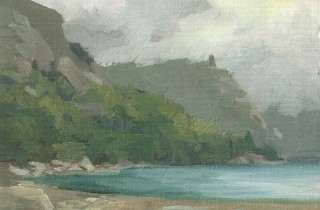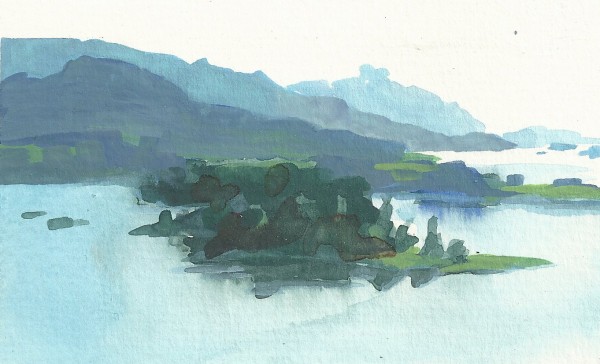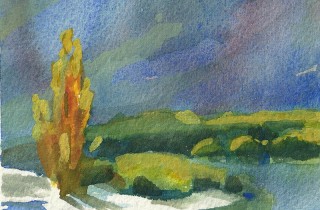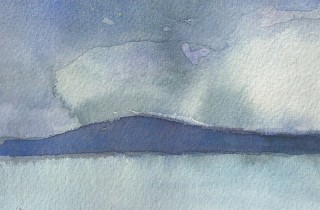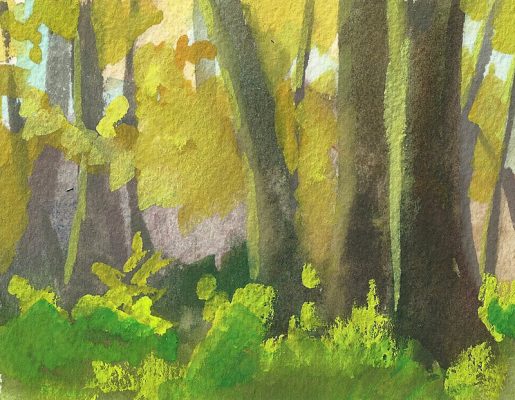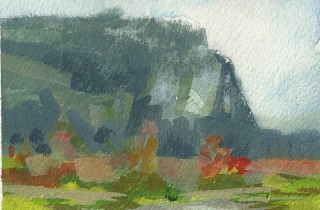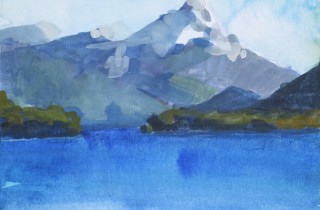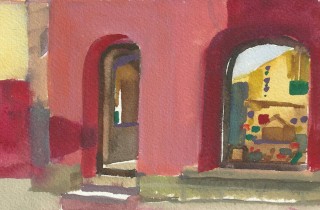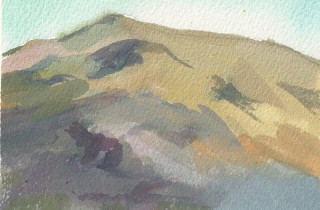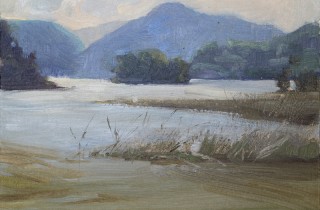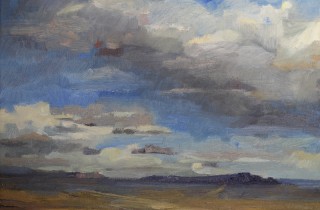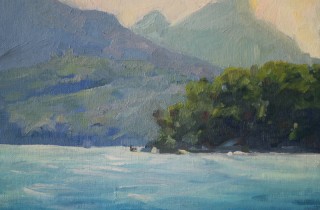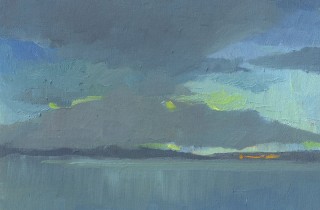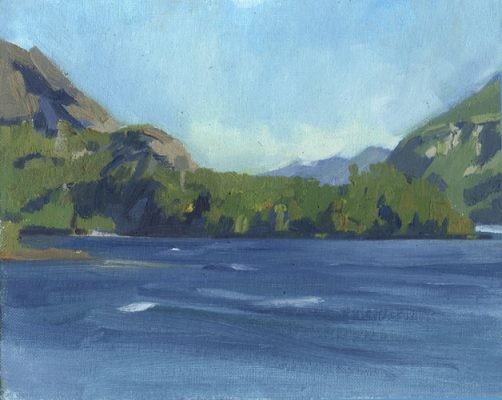
We spent a total of two months in the province of Rio Negro, Argentina. I'm still sifting through all the paintings of Bariloche I made while we were there.
Our intention was to stay one month while my husband and I both finished up some work. But our plans to keep going south were delayed along with our freelance gigs. In those few weeks, I got to experience the powerful winds Patagonia is famous for. They really are as intense as they say, and they didn't seem to stop. I'd fall asleep to the howling winds and the constant snapping of the sheets of metal from the construction site next door. In the mornings, I could judge how strong the winds were by the size of the waves on the lake. We kept our eyes glued to the weather reports from Tierra del Fuego, our ultimate goal. The roads were still open but daytime temperatures were -18 degrees Celsius and dropping.
I'm from California. I have no instinctual reference for how cold that is but we were in Munich a few winters ago, and I rode a bike to the museum in -10 degrees Celsius. It was a bit chilly. I've backpacked through mountains with snow and glaciers, but it was summer, and I was constantly moving. I tried to imagine standing in one spot painting in that kind of cold, even with down pants and jackets. A tiny inkling of doubt crept into my mind.
One night Jorge and I were cuddled up on the couch watching TV, and National Geographic's Ice Road Truckers came on. We both started cracking up when the preview showed successive shots big rigs stuck in snow embankments. Not the best show to watch when you are about to drive to the ‘end of the world'. In winter.
Meanwhile, local television stations and coffee houses were abuzz with more pressing news: Copahue, a volcano at the Chilean border was spewing black smoke, surrounding towns were evacuated and scientists were carefully measuring the seismic activity. The volcano is four hours away so there was no need to worry about rivers of fire, but not so long ago (about a year and a half) Bariloche was covered in over 2 meters of ash from a different volcanic eruption in Chile.
Suffice it to say, the idea of making it all the way to Ushuaia on this trip started looking a little sketchy.
A reality check was in order. We made a list of all the pros and cons:
Pros:
- Adventure!
- Opportunities for gorgeous painting in the snow
- Unique plein air painting experience.
- Fun and adventure! (did I already say that?)
- Stick to our plan and finish a huge chunk of the project.
Cons:
- Our Toyota Corolla could get stuck in a snow-drift miles away from anyone.
- The above could happen where there is no cell service.
- It will be bone chilling cold with strong strong winds.
- The weather could be horrible for weeks at a time making all those snow capped peaks I dream about painting impossible to see.
- Neither one of us is very experienced driving on ice.
- We could die. <– OK, that one is slightly drama queen-ish, but once I start thinking ‘whats the worst that could happen?' , its hard not to go there.
Believe it or not, we talked about this for a few days. Then we made a risk analysis (yep, Im a total geek). What sealed the deal for me was number 4 in the Con's side. All of those other things could happen but the likely hood wasn't very high. Based on what I was seeing in Bariloche, however, the odds of driving all the way down there and seeing a wall of grey clouds where the peaks of Fitz Roy should be were pretty high. So we decided to wait for spring (October on this side of the equator) when there is still snow but the skies are clear (and there's no ice on the roads).
In the few clear days we had in Bariloche, I got some plein-air painting done. In the crazy windy, icy rainy days (which was most of the time), I still got some plein-air painting done, I was just a lot more creative in how I did it (inside abandoned buildings, in the car, in cafés with a nice view…):
